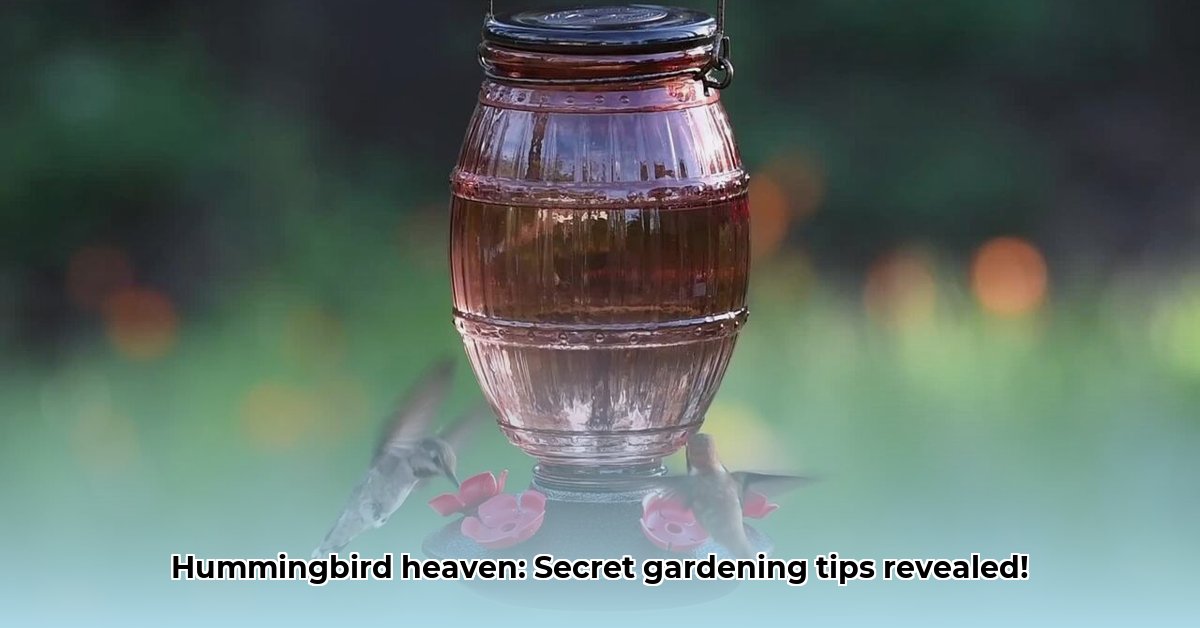
Hummingbird Feeder Tractor Supply: Your Guide to a Buzzing Backyard
Attracting hummingbirds to your yard is a rewarding experience, enriching your garden and supporting these vital pollinators. This guide focuses on how to effectively use hummingbird feeders from Tractor Supply while implementing sustainable gardening practices. We'll explore everything from selecting the right feeder and making nectar to creating a bird-friendly habitat that encourages these tiny jewels to return year after year. For more on backyard habitats, check out this helpful resource.
Choosing the Perfect Hummingbird Feeder at Tractor Supply
Tractor Supply offers a range of hummingbird feeders, each with its own pros and cons. Consider these key factors when making your selection: durability (for longevity), ease of cleaning (essential for hygiene and hummingbird health), and the presence of an ant moat (a crucial deterrent against unwanted guests).
Here's a sample comparison to assist your decision: (Note: Model availability and pricing may vary. Always check Tractor Supply's website or your local store for the most up-to-date information.)
| Hummingbird Feeder Model | Material | Ant Moat? | Cleaning Ease | Approximate Price Range |
|---|---|---|---|---|
| Model A | Sturdy Plastic | Yes | Very Easy | $10 - $20 |
| Model B | Durable Glass | No | Easy | $15 - $25 |
| Model C | Heavy-Duty Metal | Yes | A Little More Difficult | $20 - $30 |
Beyond the Feeder: Cultivating a Hummingbird Haven
While hummingbird feeders offer a convenient food source, a thriving hummingbird habitat requires more than just sugary water. These tiny birds need a varied diet, safe shelter, and a pesticide-free environment. Let's delve into creating a true hummingbird paradise.
Planting a Hummingbird-Friendly Garden
Hummingbirds are drawn to bright, tubular flowers that provide both nectar and stable landing platforms. Prioritize native plants adapted to your local climate and soil; they require less water and maintenance, promoting a sustainable approach. Excellent options include red salvia, bee balm (Monarda), and trumpet vine. Research local native plants to maximize your impact. Have you considered the energy savings and reduced environmental impact of native plantings?
Providing Safe Haven
Hummingbirds are susceptible to predators and harsh weather. Dense shrubs and trees offer crucial shelter and protection. Avoid dense hedges that could trap hummingbirds. Smaller trees and larger bushes are preferable. Creating protected spaces directly addresses their vulnerability.
Sustainable Pest Control
Pesticides pose significant risks to hummingbirds and other beneficial insects. Adopt organic gardening practices, protecting both hummingbirds and the overall ecosystem. Organic options provide a safer and more sustainable environment. What are some organic pest control methods you can incorporate?
The Nectar Recipe: Simple, Safe, and Sustainable
Making your own hummingbird nectar is easy, affordable, and ensures you're using only safe ingredients.
Here's a simple recipe:
- Boil Water: Bring fresh water to a rolling boil (1 minute). This helps dissolve sugar and inhibits microbial growth.
- Mix: After cooling slightly, add one part granulated white sugar to four parts water (e.g., 1 cup sugar to 4 cups water). Stir until sugar dissolves completely.
- Cool: Let the mixture cool completely before filling your feeder. This is crucial to avoid harming hummingbirds.
- Avoid Additives: Never use honey or artificial sweeteners; these can be harmful. Did you know that using honey can be detrimental to hummingbird health?
Feeder Placement and Maintenance: Key to Success
Proper feeder placement and regular cleaning are essential for attracting hummingbirds and preventing disease.
Optimal Feeder Placement
- Visibility: Place the feeder in a visible location, but shield it from harsh weather.
- Shelter: Protect the feeder from direct sunlight and strong winds to prevent nectar spoilage.
- Safety: Keep the feeder away from windows and potential hazards.
- Accessibility: Position the feeder for easy cleaning and refilling.
Maintaining a Clean Feeder
Clean your feeder every 3-5 days (more frequently in warm, humid weather) to prevent mold and bacterial growth. Thoroughly scrub with hot, soapy water, rinse, and air dry before refilling. Neglecting this vital step drastically reduces your chances of attracting and keeping hummingbirds. How often do you currently clean your hummingbird feeder?
Sustainable Gardening for a Thriving Ecosystem
Creating a sustainable hummingbird garden goes beyond providing a feeder. Planting native flowers offers natural nectar sources, supporting hummingbirds and other pollinators. A diverse, native planting scheme promotes a balanced and thriving ecosystem.
Key Takeaways:
- Regular cleaning of feeders prevents disease.
- Smaller feeders minimize nectar waste and spoilage.
- Avoid red dye in nectar; it's unnecessary and potentially harmful.
- Strategic placement deters unwanted visitors.
- Organic pest control protects hummingbirds and the environment.
- Remove feeders during periods of high bear activity.
By combining a well-maintained hummingbird feeder with sustainable gardening practices, you can create a vibrant backyard haven for hummingbirds and support a healthy local ecosystem. Remember, the rewards extend far beyond a lively garden – it’s a contribution to a more sustainable world.